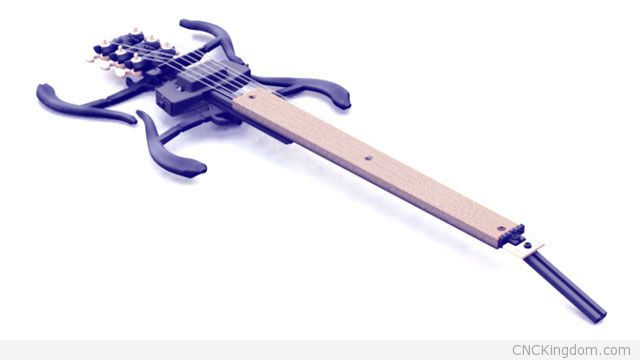Ziv Bar Ilan, Founder / CEO of Zoybar (Israel)
When I first saw Ziv’s business, I was perplexed… why wasn’t something like this developed long ago? It makes so much sense, the business model of his company Zoybar works great with the independent spirit that most musicians have, the creativity and openness that they have with their fans and for their passion. It seems like a perfect marriage of talent, ambition and freedom.
Key takeaways from this interview:
- Starting a company is hard, you have to wear many hats and be good as most of them.
- Just because nobody has done it before, don’t that deter you from following your dreams and passions.
- Look for an area that’s ripe for growth which has seen very little true innovation and go full throttle into it.
You can visit Zoybar at http://www.zoybar.net.
After you graduated from Bezalel Academy of Art and Design, you spent a few years lecturing industrial design, technology and arts. What did you enjoy so much about the academic side of designing that you wanted to start teaching it a year after graduating? I know for me, I couldn’t wait to get out of University when I graduated!
 As soon as I graduated, I started developing Zoybar as a sustainable valid business. Logistics, finance, online marketing, lean manufacturing, shipping and customs were just a few of the challenges that I had to learn and engage before even thinking of getting into the market. I guess that for the most part I was looking to stay in touch with the design community.
As soon as I graduated, I started developing Zoybar as a sustainable valid business. Logistics, finance, online marketing, lean manufacturing, shipping and customs were just a few of the challenges that I had to learn and engage before even thinking of getting into the market. I guess that for the most part I was looking to stay in touch with the design community.
Eventually I was invited to teach at the Masters program at Bezalel which was back then very fresh with diversified group of students from many different backgrounds. All and all teaching at Bezalel’s Masters program was a great change of pace in the middle of a hectic routine of a new start-up.
You were a mentor at the miLab (Media Innovation Lab) for two years after lecturing – what did you learn about this mentorship program and how different was it from the lecturing you did earlier?
As designers and for that matter in any other discipline, we are naturally encouraged to tackle projects from our specific professional background. From my own personal experience and from our current way of life we are shifting from a guild based masters to a more open multidisciplinary approach. miLab is an aspiring adaptation to MIT’s media lab. Multidisciplinary teams of students from psychology, media studies and computer science are joined together to think and develop new media applications.
The process and skills are less of the tangible crafts and more of the programming world. Never the less it is interesting to see how prototyping concepts like ‘fast and often’ are pretty much the same.

When you began Zoybar six years ago as a “decentralized R&D lab”, how did you envision a need for musicians to freely upgrade and play around with their instruments? What were some of the early successes of the lab and how well is it doing now?
Zoybar initially started in 2004 as my graduation project at Bezalel academy of arts & design. I wanted to incorporate some of the open source essentials from the programing scene into the physical prototyping and design processes. It all started from a theoretical model that I developed of how to design open source hardware projects. At the end I choose to implement it not just specifically for guitars but rather as an open platform for electric string instruments in general.
Over the last decade self expression and recognition have become a viable need in our society. Transparency and being able to take part in the decision making is part of the way we experience entertainment, arts and media (to name a few). Every medium seeks more engaging experiences, more interactive encounters and interfaces and less passive consumption from the “authorized elite”. Some of these trends also describe themselves as “democratizing the creative process”. Changing the relationship between the artists and their audiences is one of the most current challenges. Participatory Design represent and practice these concepts in the field of hardware innovation and design, but its theoretical elements can be adapted in many other disciplines.
In August 2010 Zoybar, Shapeways.com and The Blender Foundation initiated a joint venture that enabled common users to create, customize and fabricate their own (tangible) music instruments and applications.
The Blender Foundation provided their free open source 3D content creation suite, Zoybar provided their CAD files of their hardware kits and Shapeways provided the manufacturing platform.
As a result within two months more than twenty new music instruments hardware applications were designed by and for the Zoybar users.
All new designs are available for download and to be 3D printed from our community website. Alternatively every member of our community can use our fabrication partners like Shapeways.com and others to alter and fabricate their own parts. The end instruments are in the users hands, making each user a unique developer.
Today Zoybar is being played by professional musicians (such as Harvey Brooks and Marc Ribot) as by hobbyist all around the globe. Since our launch Zoybar has been recognized and awarded as a pioneer in the field of hardware design and innovation processes. On January 2010 Zoybar received the Atir award – Israeli Industrial Design Awards by the Ministry of Trade, Industry and Labor.

Can you describe some of the more unique projects that Zoybar has produced? How much customization is possible using modular hardware kits for electric guitars? Can this business model also adapted to other instruments?
Zoybar can be assembled in different assemblies. It is not a specific instrument without its creator as they could add their own customizations and create their own unique look and sounds. Until now duplicating hardware innovation was a fragmented process. You needed to start over every time. The collaborative level was more of a reaction rather than interaction. Open hardware architecture translates as open modular systems. We provide physical and virtual (CAD) “shortcuts” as creation tools for developing new music instruments.
Musicians can also mount numerous sound effects controllers that are made by third party manufacturers and independent developers. The results are interchangeable mashup instruments that enable the musicians to play and manipulate the sound simultaneously and directly from the instrument. All and all Zoybar was designed as an open hardware platform therefore hacking and reverse engineering can be easily practiced as part the creative process.
Below attached an internal video compilation (draft) that might give some idea of what is possible.
Zoybar Compilation from Zoybar on Vimeo.
What is your design process from idea to finished manufactured product? How long does it generally take to bring a new product to the market and how do you decide what you will develop next?
When thinking of R&D labs we tend to imagine a selective group of creative people in restricted unique environments. However most of these labs are actually limited by their own subsidized environment. Restricted R&D labs will always be limited by constraints of time, budget and manpower that was granted for solving a tangible problem.
Our innovation model considers every user as a potential unique developer creating a “Decentralized R&D Lab” that grows rapidly in different directions. One of the most popular and powerful feature of Zoybar is its collaborative nature as a social network for music instruments innovation. The collective intelligence decides and co-create its own modifications along with new music instruments that would have never been produced by traditional innovation and business models.
As CEO I am now focusing more on creating creative and business opportunities and do less design work myself.

Your Kaos Pad II Zoybar Guitar looks awesome – I really like the idea behind it as it allows total customization for the player on the instrument itself. It makes so much sense! Can you give me a breakdown of its ability in both technical (for those who play electric guitars) and non-technical (people who know nothing about guitars)?
Thanks Jon! 🙂 Matt Bellamy from muse has a custom kaos guitar but the problem is that it costs a fortune since both the kaos pad and the guitar needs to be altered heavily by a technician and guitar luthier. With Zoybar you only need a mounting plate to attached the kaos pad ‘as is’ without any special skills or damage to either instruments. As can be seen in this how to video:
Find more videos like this on Zoybar
As for playing and technique, the kaos pad is an effect controller, for example Effect # 80 on the mini Kaos pad is a looper & LPF. You can manipulate the loop sequence by moving your fingers on the pad.
Running our finger on the X axis on the pad manipulates the looper beat.
Running our finger on the Y axis on the pad manipulates the looper LPF cutoff & resonance.
Running our finger on a diagonal course manipulates the sound by an average of these two parameters.
Find more videos like this on Zoybar
The guitar signal runs through the kaos effect allowing the player to manipulate the sound while playing on the strings. The mixed end result goes to the amp. You can see some examples at our video gallery or on the attached video.
Find more videos like this on Zoybar
